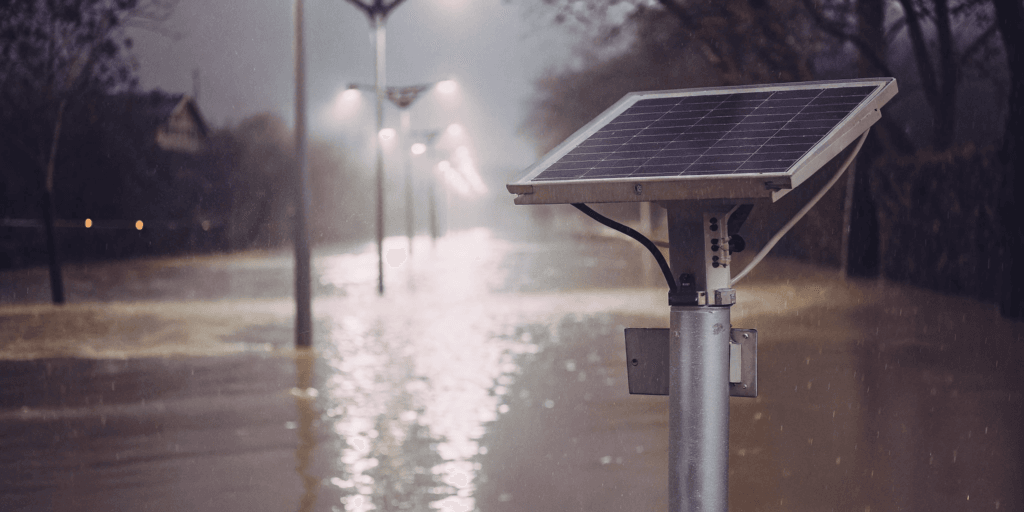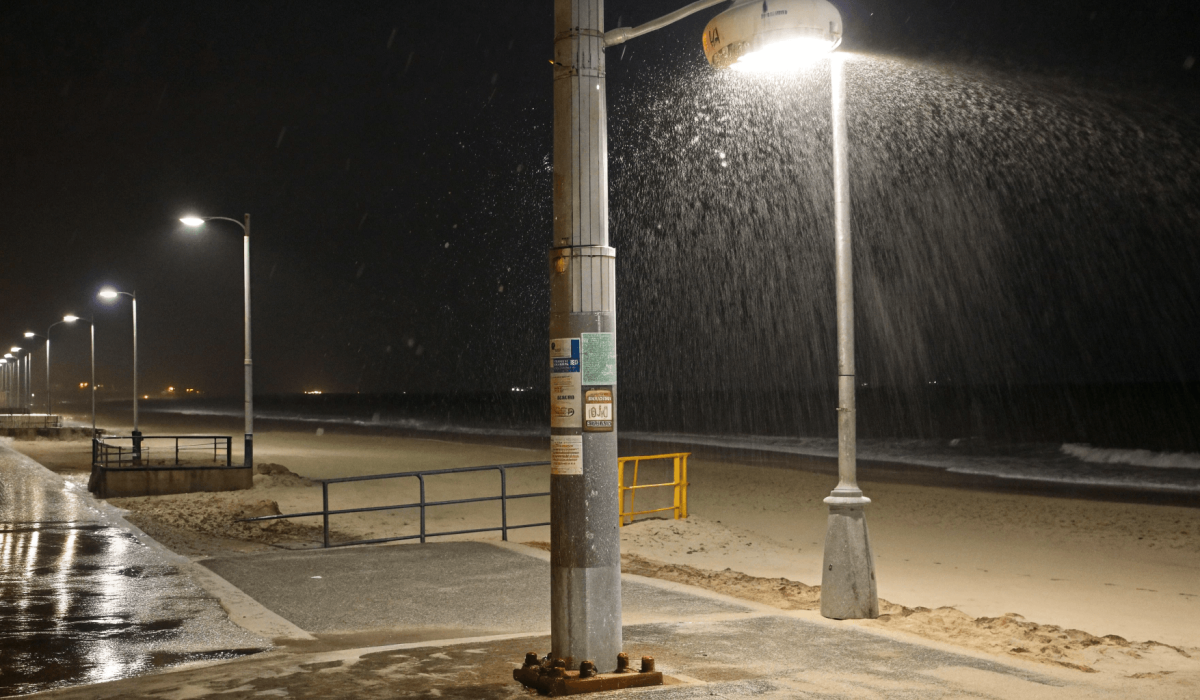Understanding the correct IP (Ingress Protection) rating is key to ensuring the durability and functionality of outdoor light poles. Choosing the right IP rating helps protect your lighting systems from the elements, ensuring long-lasting performance and minimal maintenance.
An IP rating is crucial for determining how well a light pole is protected from solid objects and liquids. The right IP rating enhances the durability, safety, and longevity of lighting installations.
Selecting the right IP rating is essential for ensuring the longevity and performance of street lighting projects. Different climates and installation environments require varying levels of protection against water, dust, and other environmental factors.
1. What is an IP Rating?
An IP rating is a standardized code that indicates the level of protection provided by an electrical device (such as a light pole) against solid objects and liquids. This rating consists of two digits: the first digit represents protection against solid objects, and the second digit denotes protection against liquids.
The first digit ranges from 0 to 6, with 0 meaning no protection and 6 being dust-tight. The second digit ranges from 0 to 9K, with 0 meaning no protection and 9K indicating protection against high-pressure, high-temperature water jets.
Common IP ratings for lighting systems include IP65, IP66, and IP67. These ratings are designed to help consumers choose the appropriate protection level for outdoor lighting based on the environment in which the lights will be installed.
2. Why IP Rating Matters for Light Poles
Weather Resistance:
Weather conditions, such as heavy rain, snow, or extreme heat, can affect the performance of outdoor lighting systems. Choosing a light pole with an adequate IP rating ensures that the fixture can withstand these elements and continue to operate effectively.
Dust and Debris Protection:
Dust and debris can quickly accumulate inside light poles, damaging the internal components. An appropriate IP rating prevents solid objects from entering the fixtures, maintaining their performance and extending their lifespan.
Electrical Safety:
Outdoor lighting systems are exposed to environmental elements that could potentially cause electrical faults, such as water or moisture. The right IP rating protects electrical components from water and dust, ensuring safe operation.
Durability in Harsh Environments:
Light poles in coastal areas, industrial zones, or remote locations face unique challenges from saltwater, dirt, or extreme weather conditions. Selecting a pole with an appropriate IP rating helps ensure the lighting system remains functional, even in the harshest environments.
3. Common IP Ratings for Light Poles

| IP Rating | Description | Ideal Environment |
|---|---|---|
| IP65 | Dust-tight and resistant to water jets | General outdoor lighting, urban areas |
| IP66 | More protection against powerful water jets | Coastal or storm-prone areas |
| IP67 | Protection against immersion up to 1 meter | Flood-prone or areas with heavy rainfall |
| IP68 | Protection against continuous submersion beyond 1 meter | Underwater applications (e.g., pools or fountains) |
IP65: This rating provides dust-tight protection and resists water jets, making it ideal for general outdoor lighting in areas such as streets and parks.
IP66: Offers stronger protection against water jets, making it suitable for coastal areas or locations exposed to frequent storms and heavy rains.
IP67/IP68: For environments that might experience submersion or heavy rainfall. IP67 offers protection against immersion up to 1 meter, while IP68 provides continuous submersion protection, suitable for underwater lighting or flood-prone regions.
4. How to Choose the Right IP Rating for Light Poles
Consider Environmental Factors:
Understanding the local weather conditions is crucial when selecting the right IP rating. For example, regions with frequent rain or humidity require higher ratings, while dry or dust-prone areas may need poles with stronger protection against solids.
Consider Installation Location:
The installation location plays a significant role in determining the necessary IP rating. Urban areas, highways, and parks might only need an IP65 rating, while industrial zones, coastal areas, or locations exposed to extreme weather conditions may require IP66, IP67, or even IP68 ratings.
Consider the Specific Light Pole Type:
Different types of light poles, such as street lights, decorative lights, or floodlights, may have different IP rating requirements. Street lights often require protection against dust and water, while floodlights in marine environments might need higher water resistance.
Balancing Cost and Protection:
While higher IP ratings offer better protection, they also come with higher costs. It's essential to balance the need for protection with your budget, ensuring the chosen rating provides the necessary protection without overspending on unnecessary features.
5. IP Rating Testing Standards and Certifications

The IP rating system follows international standards, such as the IEC 60529 standard. This standard specifies the testing procedures to determine a device’s resistance to dust and water.
It's important to verify the IP ratings through certified testing. Always look for certification marks or seals to ensure the light poles meet the necessary standards for quality and protection.
6. Benefits of Choosing the Correct IP Rating for Your Light Poles
Extended Lifespan:
Choosing the appropriate IP rating prevents damage from dust, water, and other environmental factors, which can extend the life of the lighting system and reduce the need for frequent repairs or replacements.
Improved Safety:
Proper protection from dust and water helps to avoid electrical faults or fire hazards, ensuring that the lighting system operates safely in all conditions.
Cost Efficiency:
By selecting the correct IP rating, you can prevent costly repairs or replacements, as the system is better protected from environmental factors that can cause damage over time.
Enhanced Performance:
The right IP rating ensures consistent light output and functionality, even in harsh weather conditions, ensuring that your lighting system continues to operate optimally.
7. Common Mistakes to Avoid When Choosing an IP Rating for Light Poles
Overestimating the Protection Level Needed:
Choosing a higher IP rating than necessary can lead to overspending. Evaluate the environmental conditions carefully to avoid paying for excessive protection.
Underestimating the Impact of Local Weather:
It's important to consider how local weather conditions will impact the light poles. Ignoring factors like humidity, heavy rainfall, or coastal environments can lead to performance issues or premature damage.
Not Considering Future Maintenance Needs:
When selecting an IP rating, factor in the long-term maintenance needs of the light poles. Choosing a higher rating might reduce maintenance frequency, but it’s essential to balance that with cost and protection requirements.
8. Conclusion: Making the Right Choice for Your Light Pole’s IP Rating
Selecting the correct IP rating for your light poles is essential for ensuring durability, safety, and performance. Take the time to assess your local environment, weather conditions, and installation location to make an informed decision. By consulting with experts or manufacturers, you can find the right IP rating that balances protection and cost, ensuring your light poles function optimally for years to come.


